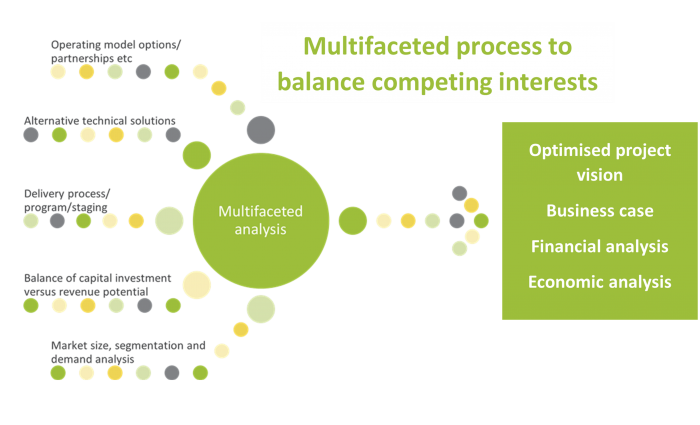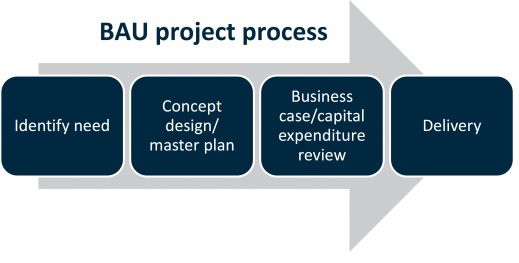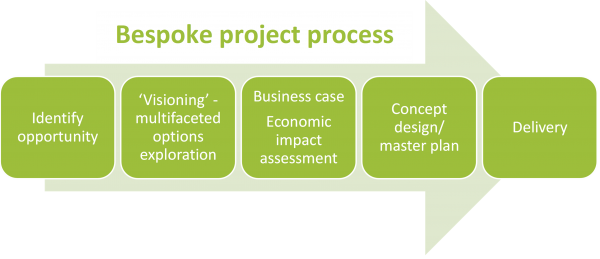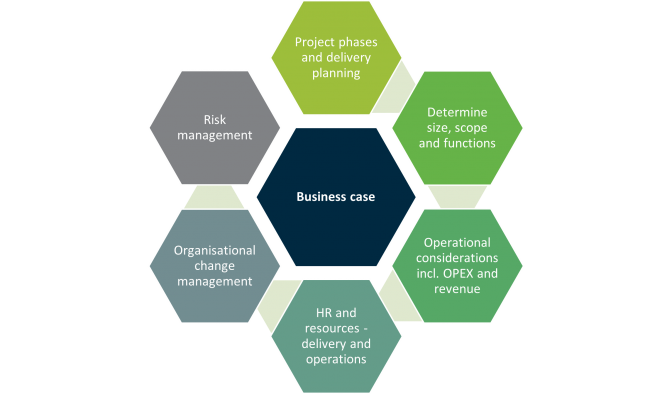December 2021
Project management experts often say that the majority of project failures are caused by poor planning. This can sound like the words of a Monday-morning quarterback - only wise in hindsight. If projects that fail are those that experience the biggest unforeseen risks, how can you plan for risks you didn’t foresee? How can you improve project planning without a crystal ball?
If you knew which projects were going to fail, then you could invest more effort into planning those specific projects!
Luckily, there are three simple steps executive management can use to get the best bang for buck out of their investment in project planning, and this acts as a form of insurance against project failure.
1. Distinguish bespoke projects from business-as-usual
Projects that can be classified as business-as-usual (BAU), no matter how large, can be effectively managed as an ongoing program of works, rather than as unique bespoke projects.
BAU projects include renewals on a like-for-like basis, projects governed by existing performance standards and design standards, and generally where the goal is to deliver an outcome consistent with established benchmarks set by past project outcomes. For BAU projects, the business case often takes the form of a capital expenditure (CAPEX) review, which is often treated as merely a compliance requirement.
However, there is a different class of projects - bespoke projects - that can be distinguished as projects that seek to strike a new and unique optimum balance between various competing interests - size and scale of functional components, level of performance, capital cost, operating and other whole-of-life costs, delivery timeframe, alternative operating models and structures, etc.
With bespoke projects the challenges are not merely program delivery uncertainties. Instead, the key challenge is identifying the appropriate balance between these multifaceted competing interests. This is a creative, entrepreneurial challenge, as well as a strategic and technical challenge. It therefore demands a multi-skilled team akin to a private-sector entrepreneur, led by a team such as Morrison Low, with skills in finance, economics, project management, as well as key technical skills.

2. Recognise ‘project vision’ as a vital first step
BAU projects typically begin with a concept design phase - this works well for BAU because past projects provide sufficient information for designers to get to work straight away applying previous lessons learned to the latest iteration of the program:

Unfortunately, if one were to copy and paste this tried-and-tested BAU method of delivery, and apply it to a bespoke project, that act alone will all but guarantee project failure! That is what the experts mean when they say poor planning causes project failures.
Instead of getting straight down to developing a concept design, it is critical to change the order of operations, and begin with a multifaceted visioning, options analysis and business case phase:

It is only through a multifaceted business case analysis process that a holistic comparison of CAPEX, operating expenditure (OPEX), revenue, timeline and risk implications of competing alternatives can be fairly weighed and assessed. It is also through this form of analysis that overall benefits can be assessed in the light of overall resource needs, costs and risks, to determine whether the outcomes justify the investment.
If, as in the BAU process, a concept design were commenced without first developing a clear project vision and strategy, the project would be forever flying blind.
For bespoke projects the alternative delivery processes pitfalls and payoffs can be summarised as follows:
Pitfalls of BAU process
Payoffs of bespoke project process
3. Put the business case at the heart of the project
The business case should be viewed as a living, strategic document that sits at the centre of the project. (It plays a similar role in the internationally recognised PRINCE2 management framework.)
The business case defines the strategic balance of competing priorities, resolves these in the form of a plan for project delivery, and provides the baseline against which project performance should be measured and key strategic decisions judged.

As the key strategic definition of the project, it is vital that the project performance is measured against the original business case at regular intervals (at minimum at the conclusion of each project phase) in the form of a business case update. This can operate akin to an independent stage gate review, that ensures the project continues to deliver against its strategic goals determined by executive leadership.
Business case reviews identify and recommend course corrections for the project team where necessary.
These recommendations for bespoke projects often apply to the most significant, high profile, politically sensitive and strategically important projects, where the risks of project failure are at a premium and investment in insurance is paramount.
For these projects, an ounce of prevention really is worth a pound of cure.
For more information or if you have any questions, please contact Greg Smith on 0407 294 765.